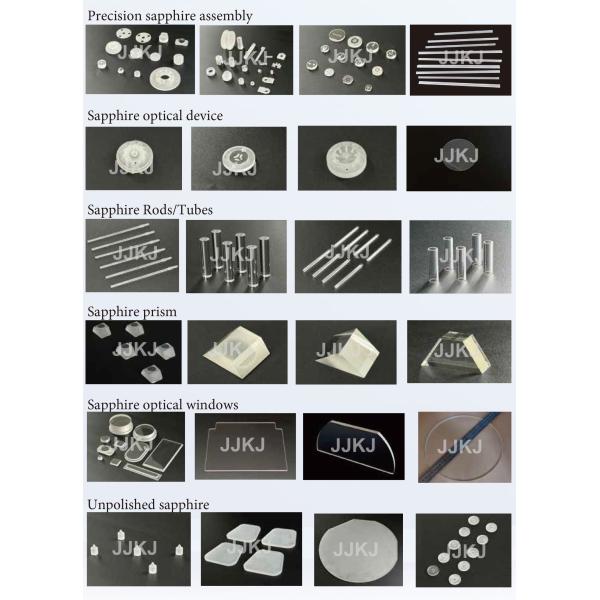Sapphire optical components' properties:
1.High Hardness:Sapphire is one of the hardest known materials, second only to diamond on the Mohs scale. This hardness makes sapphire optical components resistant to scratching and abrasion, ensuring long-term durability and reliability.
2.Excellent Optical Transparency:Sapphire exhibits exceptional optical transparency across a wide spectrum, from ultraviolet (UV) to near-infrared (NIR) wavelengths. This property allows sapphire optics to transmit light with minimal absorption or scattering, making them suitable for various optical applications.
3.Chemical Stability:Sapphire is chemically inert and resistant to corrosion, even when exposed to harsh chemicals and environments. This stability ensures that sapphire optical components maintain their optical performance over time, making them suitable for use in challenging conditions.
4.High Thermal Conductivity:Sapphire possesses high thermal conductivity, allowing it to efficiently dissipate heat generated during operation. This property helps prevent thermal distortion and ensures optical stability, particularly in high-power laser applications.
5.Wide Temperature Range:Sapphire optical components can withstand a broad temperature range, from cryogenic temperatures to high temperatures exceeding 2000°C. This thermal stability makes sapphire optics suitable for use in extreme environments, such as space exploration and industrial processes.
6.Low Fluorescence: Sapphire exhibits minimal fluorescence when exposed to certain wavelengths of light, making it suitable for fluorescence microscopy and other applications requiring low background noise.
7.High Mechanical Strength: In addition to its hardness, sapphire also possesses high mechanical strength, allowing it to withstand mechanical stress and pressure without deformation or breakage.
8.Biocompatibility: Sapphire is biocompatible and non-toxic, making it suitable for use in medical devices and biomedical applications where optical clarity and compatibility with biological tissues are essential.


Our related products:

What is a sapphire lens material?
Sapphire is the second hardest crystal next to diamond and, because of their structural strength, Sapphire crystal lenses can be made much thinner than other common materials. Chemically, Sapphire is single crystal aluminum oxide(Al2O3) and is useful in a transmission range from 0.15 to 5.5μm.













